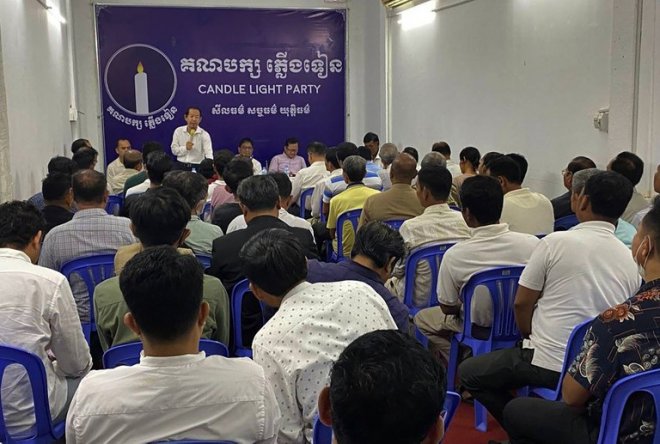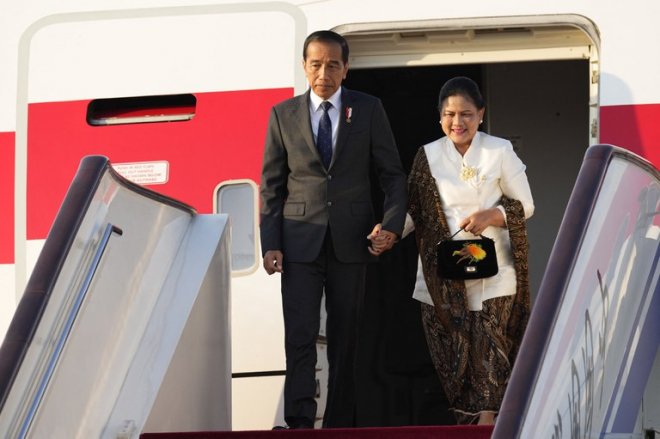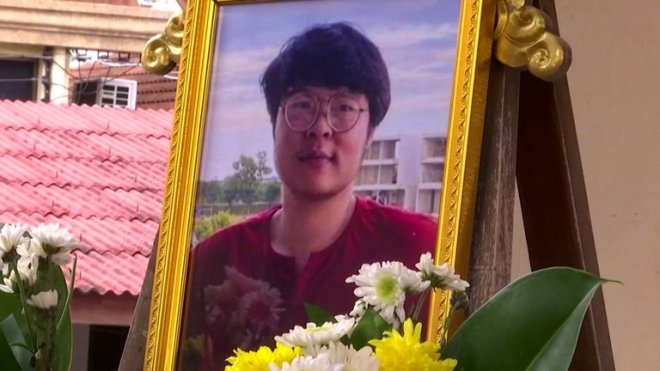Scarce drinking water in North Korea during severe spring drought
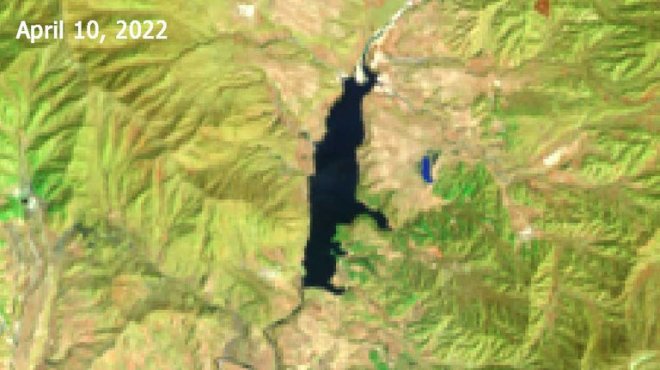
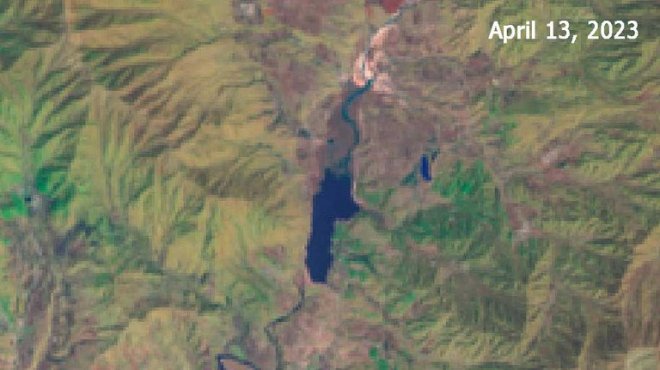
The Ransong reservoir in Pyongyang county, Kangwon province, North Korea, experienced a significant water level decline between April 10, 2022
and April 13, 2023
. Credit: NASADrinking water is becoming more difficult to obtain for many North Koreans as the country is in the midst of one of the worst droughts since the government began keeping records in 1981, sources in the country told Radio Free Asia.
And satellite evidence shows that many of the country’s reservoirs have shrunken, sometimes dramatically, over the past year.
State media reported Tuesday that a lack of water could make food shortages worse, and there was a “nationwide effort” to try to save crops from damage.
On a personal level though, the people are having to go to greater lengths to obtain water to drink, a source from the northwestern province of North Pyongan told RFA’s Korean Service on condition of anonymity for security reasons.
“There are many reservoirs, [but they dry up, so] we fetch water and drink it. We carry water with a bucket, but the water supply is not working well,” she said. “We can more easily fetch water in the winter, but the spring and fall seasons are the worst. The water pumping station is running dry and we don’t get tap water at all.”
The source said that the people go to the riverside to fetch water and purify it so that it is safe to drink.
“It’s a really serious situation and we don’t use disinfectants. We use charcoal,” the source said. “We spread sand, put on a layer of charcoal, pour the water over it and make a hole in the bucket. That’s what we drink.”
View from the sky
Satellite imagery of reservoirs in North Korea shows that spring droughts this year and last year have greatly reduced water levels, Bruce Songhak Chung, a researcher at the South Korea-based Korean Institute for Security and Strategy, told RFA.
His team used images taken by NASA’s Landsat 8 and 9 satellites to compare water levels from April 2022 in 12 reservoirs in various parts of the country with their water levels in April 2023.
“We found that the water in the 12 agricultural reservoirs across … had a net decrease compared to last year. In particular, the Ransong Reservoir in Pyonggang County, Kangwon Province, had a 62% decrease in water,” said Chung, who added that this would mean a “crisis” when trying to find water for irrigation.
Chung noted that the images could be used to measure the surface area of the lakes, but it would be difficult to determine volume because that requires knowledge of the reservoirs’ average depths.
“Depending on the region, some reservoirs showed an increase in water levels,” said Chung. “However, overall, we can confirm that the water in North Korean reservoirs has decreased this year compared to last year.”
This year’s record-breaking drought is due to weather events that have happened over the last year including “La Niña,” which is caused by rising sea surface temperatures due to global warming, Chung said.
That means North Korea’s farms could be in big trouble, he said.
“The preparations for farming are in an emergency situation and it does not seem like irrigation alone will solve the problem,” he said. “If this year’s spring drought is similar to last year’s or a little more severe, the outlook for this fall’s harvest will be bleak.”
Black market for water
Due to the scarcity of water, a black market for water has emerged, said the North Pyongan source.
“Water sellers carry containers filled with spring water and they go here and there and sell spring water for a certain amount per container,” said the source. “They sell a five-liter [1.3 gallon] container, or a 10-liter [2.6-gallon] container. Water is difficult to carry and it has to be brought in from a place far from downtown. So you buy water when the water sellers bring it by.”
Water for farming is even more difficult to obtain, the source said.
“Every farm has an irrigation canal and every river has an irrigation canal. In places where there is no irrigation canal, they use a pump. They pump up the water with electricity. However, right now the fields are all dry and it is a very bad situation,” she said. “There is no problem with the areas near the river, but farming is difficult in the areas with no rivers close by. It is making a bad situation even worse.”
Another source, from the western province of South Hwanghae, told RFA that the irrigation channel is no longer working.
“The waterway is a mess right now,” she said. “People come and carry water on their backs, or with an ox cart. It’s been so long without irrigation, and people don’t have any idea how difficult life is here.”
Translated by Claire Shinyoung Oh Lee and Leejin J. Chung. Edited by Eugene Whong.
[圖擷取自網路,如有疑問請私訊]
And satellite evidence shows that many of the country’s reservoirs have shrunken, sometimes dramatically, over the past year.
State media reported Tuesday that a lack of water could make food shortages worse, and there was a “nationwide effort” to try to save crops from damage.
On a personal level though, the people are having to go to greater lengths to obtain water to drink, a source from the northwestern province of North Pyongan told RFA’s Korean Service on condition of anonymity for security reasons.
“There are many reservoirs, [but they dry up, so] we fetch water and drink it. We carry water with a bucket, but the water supply is not working well,” she said. “We can more easily fetch water in the winter, but the spring and fall seasons are the worst. The water pumping station is running dry and we don’t get tap water at all.”
The source said that the people go to the riverside to fetch water and purify it so that it is safe to drink.
“It’s a really serious situation and we don’t use disinfectants. We use charcoal,” the source said. “We spread sand, put on a layer of charcoal, pour the water over it and make a hole in the bucket. That’s what we drink.”
View from the sky
Satellite imagery of reservoirs in North Korea shows that spring droughts this year and last year have greatly reduced water levels, Bruce Songhak Chung, a researcher at the South Korea-based Korean Institute for Security and Strategy, told RFA.
His team used images taken by NASA’s Landsat 8 and 9 satellites to compare water levels from April 2022 in 12 reservoirs in various parts of the country with their water levels in April 2023.
“We found that the water in the 12 agricultural reservoirs across … had a net decrease compared to last year. In particular, the Ransong Reservoir in Pyonggang County, Kangwon Province, had a 62% decrease in water,” said Chung, who added that this would mean a “crisis” when trying to find water for irrigation.
Chung noted that the images could be used to measure the surface area of the lakes, but it would be difficult to determine volume because that requires knowledge of the reservoirs’ average depths.
“Depending on the region, some reservoirs showed an increase in water levels,” said Chung. “However, overall, we can confirm that the water in North Korean reservoirs has decreased this year compared to last year.”
This year’s record-breaking drought is due to weather events that have happened over the last year including “La Niña,” which is caused by rising sea surface temperatures due to global warming, Chung said.
That means North Korea’s farms could be in big trouble, he said.
“The preparations for farming are in an emergency situation and it does not seem like irrigation alone will solve the problem,” he said. “If this year’s spring drought is similar to last year’s or a little more severe, the outlook for this fall’s harvest will be bleak.”
Black market for water
Due to the scarcity of water, a black market for water has emerged, said the North Pyongan source.
“Water sellers carry containers filled with spring water and they go here and there and sell spring water for a certain amount per container,” said the source. “They sell a five-liter [1.3 gallon] container, or a 10-liter [2.6-gallon] container. Water is difficult to carry and it has to be brought in from a place far from downtown. So you buy water when the water sellers bring it by.”
Water for farming is even more difficult to obtain, the source said.
“Every farm has an irrigation canal and every river has an irrigation canal. In places where there is no irrigation canal, they use a pump. They pump up the water with electricity. However, right now the fields are all dry and it is a very bad situation,” she said. “There is no problem with the areas near the river, but farming is difficult in the areas with no rivers close by. It is making a bad situation even worse.”
Another source, from the western province of South Hwanghae, told RFA that the irrigation channel is no longer working.
“The waterway is a mess right now,” she said. “People come and carry water on their backs, or with an ox cart. It’s been so long without irrigation, and people don’t have any idea how difficult life is here.”
Translated by Claire Shinyoung Oh Lee and Leejin J. Chung. Edited by Eugene Whong.
[圖擷取自網路,如有疑問請私訊]
|
本篇 |
不想錯過? 請追蹤FB專頁! |
| 喜歡這篇嗎?快分享吧! |
相關文章
AsianNewsCast

















